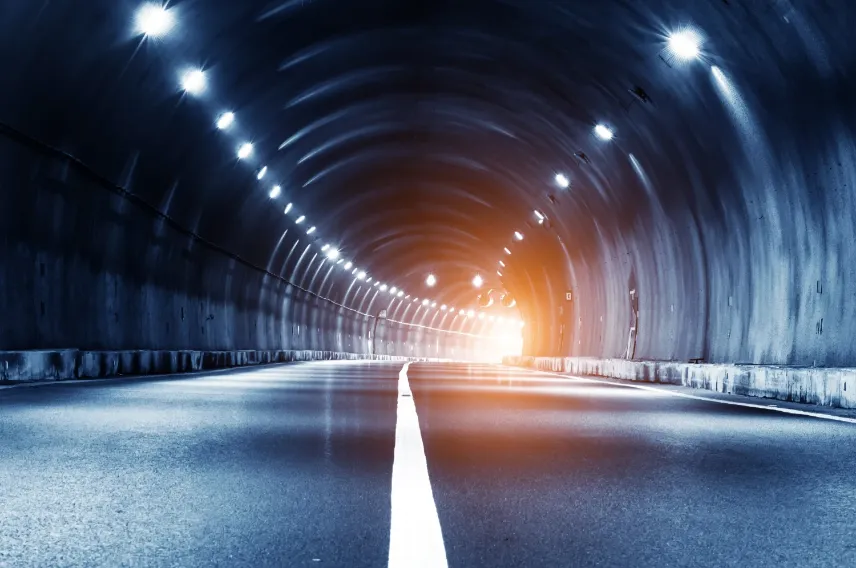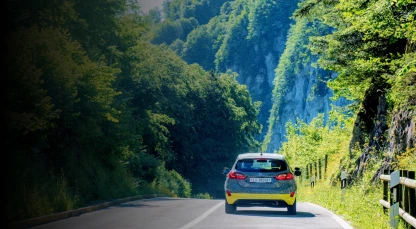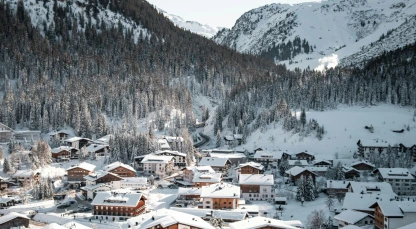Due to maintenance orders placed after 11 PM CEST will not be processed until the next day at 4 AM. If you travel before 4 AM we recommend to buy a physical sticker.
The Gubrist Tunnel
Although completed in 1985 and relatively short by Swiss tunneling standards, this tunnel enhances the national motorway system up to this day. It was named for the hill under which it passes. In this article, you'll learn about the importance of where it is located, its specifications, and how to take advantage of its benefits.
Gubrist Tunnel: Gateway to Zurich's Heart
As an important conduit in Swiss transportation infrastructure, the road tunnel tube is a pivotal link from the nation's capital, Zurich. It is part of the Zurich northern bypass, commissioned by the Federal Roads Office.
It facilitates access to regional hubs to the west (Aargau) and north (Schaffhausen), as well as eastwards to Germany and Austria. With live news available on tunnel conditions, its efficiency benefits inter-regional connectivity and bolsters economic activities.
Gubrist Tunnel - Toll Free
As with several other tunnel tubes in Switzerland, there are no direct fees payable to use the tunnel. However, as it lies on the nation's motorway systems where tolls are often payable, it is advisable to obtain a Swiss Vignette. Purchased instantly online, the e-vignette facilitates easy payment and improved efficiency when travelling around Switzerland.
By using a vignette with the tunnel, you'll experience the seamless convergence of efficiency and safety in the tunnel, where every curve and stretch is a tribute to Swiss precision. For drivers, it's not just a tunnel but a passage through time and space, condensed into moments of tranquility beneath the bustling life above.
Elevation and Length of the Gubrist Tunnel
The structure, spanning approximately 3.3 km long, is a vital thoroughfare in Switzerland's transport network. Boasting a modern infrastructure, the tunnel extension accommodates a total of six lanes, ensuring smooth traffic flow and efficient interregional connectivity. The tunnel's well-lit interior, coupled with advanced ventilation systems, ensures a secure and swift passage for commuters.
| Tunnel Length | 3.3 km long (2.05 miles) |
| Width | 3 x 16 m |
| Elevation Range | 430-450 m |
| Number of Tubes | 3 |
| Number of Lanes | 2 x 3 lanes |
| Average Travel Time * | 3m30s |
*Traffic through the tunnel is occasionally congested, so be sure to check traffic conditions online before departure in case of delays.
Terms of Use & Restrictions
Here is an overview of the rules and regulations applicable to drivers using the tunnel:
- Drivers must follow the rules applicable to all who use the Swiss road network. This includes all restrictions applicable to individual drivers and vehicle loads and classes.
- Speed limit - 80 km/h (50 mph).
- Drivers should be aware of the inherent risks of driving in tunnels. Every vehicle should carry an emergency hazard triangle to deploy in the event of a breakdown or accident.

Guidelines for emergency situations or accidents in the tunnel.
In the event of an accident or vehicle breakdown, the tunnel is equipped with emergency stations equipped with SOS phones and fire extinguishers. There are 23 emergency bays situated at 150-metre intervals.
Emergency Contact Numbers
- Ambulance: 144
- Police: 117
- Fire: 118
- Universal European emergency number: 112
- Swiss traffic information service (TCS) - +41 800 140 140
- Live traffic information and current queue length at gotthard-traffic.ch.
Gubrist Tunnel Current & Live Webcam
The tunnel is open 24/7 throughout the year. Gubrist Tunnel Weather and Traffic conditions in the tunnel can be viewed on this website. Additional information regarding up-to-date traffic information is available here.
Alternative routes to the Gubrist Tunnel?
Below are a couple of alternatives for drivers who do not want to use the northern bypass tunnel.
- Alternative 1: If driving from Zurich to Bern, take the A1 highway and exit at the Urdorf interchange. From there, follow the signs to Affoltern am Albis and then continue on the A4 highway towards Zug and Lucerne.
- Alternative 2: Another option is to take the A3 highway towards Basel and exit at the Wohlen interchange. From there, follow the signs to Bremgarten and then continue on the A1 highway towards Bern.
Please note that these are general alternatives and may not be the most optimal routes for your specific situation. It’s always a good idea to check traffic conditions and online maps and plan your route accordingly.




